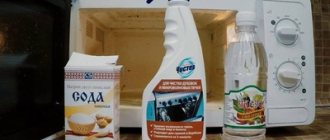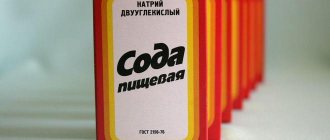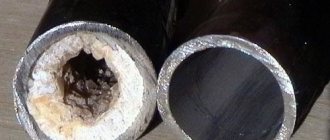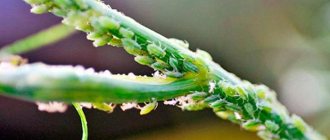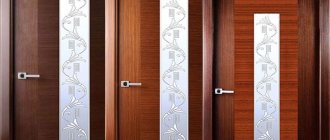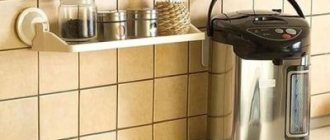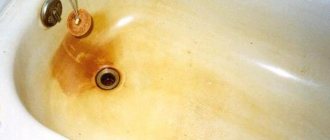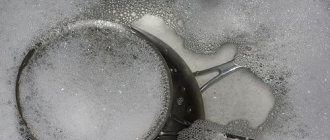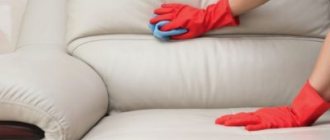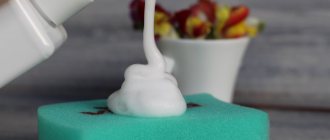Sometimes one look at a rusty tool is enough to decide to get rid of it. However, there is no need to rush, as there are many ways to combat corrosion at home.
Folk or store remedies or devices for mechanical cleaning come to the rescue.
Read the article to learn how to apply them correctly in practice, successfully remove rust from an instrument at home and restore its original appearance.
Folk remedies
You can quickly and safely deal with rust using available tools. The most unexpected and inexpensive compounds come to the rescue, including acetic acid, hydrogen peroxide and even carbonated drinks like Coca-Cola, but for these products to work, they must be used according to the instructions.
How to remove with acetic acid?
For cleaning, it is recommended to use an essence with a concentration of 70%.
Mode of application:
- Place the instrument that needs cleaning into a suitable container.
- Fill it completely with acetic acid.
- Cover the container with a lid and leave for several days. The more rust, the longer it will take.
- After cleaning, rinse the tool in a baking soda solution. It neutralizes acid.
After this treatment, you can continue to use the devices. The effectiveness of cleaning with essence is very high. It allows you to cope even with a thick layer of rust. If it is small, then you can use table vinegar or lemon juice.
It is not recommended to use vinegar to clean aluminum tools as it will dissolve the epoxy layer and damage the metal structure.
If rust has stuck to the tool in pieces, then the areas can be cleaned with ordinary food foil. It is used as a scraper.
Citric acid and hydrogen peroxide
You can get rid of rust using citric acid and pharmacy hydrogen peroxide. To prepare the solution you will need:
- citric acid – 20 g;
- peroxide – 15 ml;
- water – 100 ml.
Instructions for use:
- All components are mixed with each other.
- Place the instrument in a suitable container and fill it with solution.
- Leave them for a day under a closed lid.
- After the specified time, the solution is drained. The instrument is washed with clean water, dried and used for its intended purpose.
During the cleaning process, the solution will become dark in color. This is normal and indicates the effectiveness of the composition. With its help you can cope with a small layer of rust.
If the instrument is severely damaged, the concentration of the solution must be increased. In advanced cases, they refuse to add water altogether, dissolving citric acid in peroxide .
The video will tell you how to remove rust using citric acid and peroxide:
How to remove Coca-Cola?
Coca-Cola is a popular carbonated drink that can be used to remove rust. The effect is achieved due to the content of orthophosphoric acid, which corrodes oxides.
Mode of application:
- pour Coca-Cola into a suitable container;
- place rusted objects in it;
- cover the container with a lid;
- leave for a day.
The next day, the part is removed, rinsed with clean water and dried.
Coca-Cola is one of the budget and effective rust removers. Sprite and Fanta have a similar effect.
Soda
You can deal with rust using baking soda. An alkaline solution will help get rid of a small layer of corrosion without harming the metal. The effectiveness of the method is explained by the active action of sodium.
Mode of application:
Prepare the required amount of soda slurry by mixing the powder with water. It should be moderately thick, reminiscent of a paste in consistency.- Using a sponge, apply the paste to the instrument.
- Leave the mixture to act for an hour.
- Rinse the product and wipe it with a dry soft cloth.
- If necessary, the procedure can be repeated.
Baking soda is not a highly effective way to combat rust, but a small layer can be removed this way.
Zinc chloride
You can use zinc chloride to remove rust. Apply it as follows:
- 20 g of zinc chloride are dissolved in 200 ml of water, the product is prepared in the quantity required;
- pour the solution into a suitable container, lower the tool into it;
- leave to act for an hour;
- Rinse the instrument with clean water and wipe with a dry cloth.
Zinc chloride contains free hydrochloric acid, which has the ability to dissolve rust. The main thing is not to overexpose the composition so that the metal itself does not turn black.
The method is quite effective; zinc chloride can cope with even large areas of corrosion.
Selecting the right tool
A high-quality and correctly selected tool will help you deal with fasteners faster. For the impact method you will need a hammer, a punch, and a chisel.
The heads of the hardware are cut off with a grinder and a metal disc. The remaining part of the bolt in the body of the part is drilled out with an electric drill. If you need to destroy the nut, choose a puller.
When it has been possible to successfully remove the rust using means, the hardware is unscrewed with keys. A socket, open-end, or socket tool is suitable. Good sliding keys and heads.
Specialized compounds
If available products cannot cope with rust, you can use store-bought compounds. The following removers work well to remove corrosion:
Neomid 570 .
The concentrated composition contains a complexing agent, a solvent and a corrosion inhibitor. The composition is applied to the problem area with a synthetic sponge and left for half an hour. After the reaction is completed, the remaining product is removed with water. The cost of 1 liter of solution is 580 rubles.- Rust Remover Prosept 023-05 . The composition is applied to the surface using a spray bottle, which is equipped with a bottle. Leave the product for 20 minutes to take effect, after which it is washed off with water or removed with a damp sponge. The cost of a solution with a volume of 0.5 liters is 250 rubles.
- G-Power Zinc Remover . Apply the product to the cleaned surface, wait until it dries completely and thoroughly clean the tool with a soft brush. The cost of a solution with a volume of 0.75 l is 200 rubles.
You can purchase the compounds in hardware stores and in stores for car enthusiasts, as well as on the Internet.
Removing rust using electrolysis
The method is effective, but dangerous. Therefore, it should be used only in the most necessary cases, if rust cannot be dealt with using folk remedies and special chemicals.
To remove corrosion, proceed as follows:
- Fill a plastic container with warm water.
- Add 2 tbsp. l. soda or salt.
- Get a car battery charger.
- Attach a metal plate to one wire, and a corroded object to the other.
- Place both ends in the container and turn on the device for half an hour, setting the current to 4–6 amperes.
- Remove any remaining rust with a brush or sponge.
Cleaning with this method must be done extremely carefully. Children should not be present. Remove items to be cleaned from the container only after disconnecting from the power supply!
Mechanical cleaning to restore original appearance
You can get rid of rust on tools mechanically. For this use:
- Hand brushes with metal bristles. They differ in the stiffness of the bristles and the way they are attached to the handle.
- Mechanical brushes with pneumatic drive. This method may seem easy to use at first glance, but working with automatic brushes is quite difficult, since you have to process small parts. During the procedure, a lot of fine metal dust is generated indoors, so the respiratory system must be protected with a respirator.
- Aluminum foil soaked in vinegar or other acid.
- Sandblasting machines. With their help, you can clean the tool in a few seconds. Moreover, the thickness of the corrosion does not matter.
Regardless of the selected device, the procedure does not change. General instructions for using the tools:
- Before cleaning, the tool must be securely fixed - the optimal setting for this purpose is a vice;
- The surface should be rubbed evenly, controlling the pressing force;
- movements should be circular;
- The stiffer the brush, the less time the procedure takes.
When working with any tool, your hands should be protected with gloves, and your face and eyes with a mask.
Prevention of rust formation on metal products
To prevent items from rusting, you should follow some recommendations:
- Keep metal products dry. After contact with water, dry them thoroughly.
- To avoid moisture accumulation, it is better to store iron objects in cold places.
- Before painting, treat products with a moisture-proof primer. For a smooth surface it is better to use an aerosol, for a rough surface - putty.
- If possible, apply a layer of paint to the metal surface, which will provide protection from moisture.
By cleaning rust from metal at home, you can restore it to its proper appearance and extend its service life. By following pollution prevention tips, you can avoid this problem altogether.
Helpful information
To ensure that the process of removing rust from tools is as effective and safe as possible, you must adhere to the following recommendations:
- You need to be careful when working with acids and caustic compounds. Hands must be protected with gloves and care should be taken not to get the product in the eyes or on exposed skin.
- To soak tools, you need to use plastic basins or buckets. Metal products are not suitable for this purpose.
- The rust removal solution does not need to be poured out. If there are other contaminated instruments in the house, it can be reused by straining through cheesecloth. This does not reduce the effectiveness of acidic compounds.
- Before using any solvent, loose rust must be removed mechanically.
- Chemical reagents should be used in a well-ventilated area, away from heat sources.
How to Remove Iron and Rust Stains
When iron begins to corrode, it forms rust, a substance that often causes unsightly brownish stains. If you accidentally bump into a rusty surface, you'll end up with a serious laundry stain. Follow these stain removal tips to keep your fabrics and home surfaces clean.
Announcement
The first step in removing rust stains is to identify the painted material. If you are dealing with delicate fabrics such as acetate, fiberglass, rayon, silk, triacetate, wool, leather or suede, you should contact a professional cleaner
. Due to the difficulty of removing rust stains, it is best not to attempt to remove the stain from these delicate fabrics yourself.
Many other materials with rust stains can be cleaned at home. Follow the specific advice on each page for the following materials:
.
Simple rules of care
It is quite obvious that any trouble, including rust, is easier to prevent than to deal with it later. By following these tips, you will never know what corrosion is like on the surface of tools:
- After use, tools should be wiped dry, and ideally also covered with a protective film of WD-40 aerosol;
- Choose the driest places to store tools. Under no circumstances should you store your toolbox under a shelter outside or in the attic;
- To be on the safe side, place silica gel bags in the tool box;
- To store your work equipment, give preference to wooden boxes, as they perfectly maintain an optimal microclimate inside.
Additional Tips
To ensure that the procedure for unscrewing the nut gives a positive result, it is useful to consider additional recommendations. They concern not only the destruction of the rusty layer inside the fasteners, but also the screwing of the bolt itself. Often the problem is aggravated due to the fact that the screw was initially tightened in violation of the technology.
It is important to remember that:
Do not use dirty or rusty parts, and do not use excessive force when tightening.- Before screwing, it is useful to treat the bolts with silicone, grease or graphite grease.
- Before using any anti-corrosion agent, it is recommended to clean the outside of the fasteners with a wire brush.
- If one method does not produce results, it is repeated or an alternative method is used.
How to easily unscrew a rusty bolt when only improvised tools are at hand
Receive one of the most read articles by email once a day. Join us on Facebook and VKontakte.
Many men, when repairing a car, or simply in everyday life, have encountered “stuck” bolts and nuts. Sometimes you have to struggle with rusty fasteners for hours, and the technician often runs the risk of breaking everything and also getting a bunch of bruises. How to avoid this and learn how to easily and simply unscrew old bolts, see our review.
Nuts and bolts soured
Unit/system: Chassis
Fault: Nuts and bolts are soured
Symptoms
- Deep corrosion of the threaded connection.
- The bolt or nut does not budge when you try to unscrew it.
Causes of malfunction
- Finding a threaded connection in an area exposed to road dirt.
- Lack of protection.
- Torque violation.
- Old age of the node.
Possible consequences of failure to eliminate
As a rule, difficulties with unscrewing bolts and nuts when servicing a car leads to a significant increase in the time and cost of work. In some cases, with unqualified intervention, irreversible damage to the node may occur, requiring its replacement. Dealing with rusted threaded connections takes time and the right materials.
Solution
Before unscrewing, use one of the special tools:
Rust solvent Rostloser
Aerosol contains low-viscosity mineral oil and a powerful complex of additives: surface-active, lubricating, anti-corrosion, protective. Penetrates perfectly into thin gaps, softens and separates rust from the surface, displaces water, lubricates, and maintains.
- Removes rust and dirt.
- Fast and high penetrating power.
- High penetrating ability.
- Excellent anti-corrosion protection.
- Neutral to plastics, metals, varnish surfaces.
- It has water-repellent and displacing properties.
Article: 1985 Volume: 0.3 l
Article: 1611 Volume: 0.6 l
Rust solvent with molybdenum disulfide MoS2-Rostloser XXL
The product perfectly dissolves rust, and a special substance, molybdenum disulfide (MoS2), provides lubrication on the threads, which eliminates the presence of damage caused by corrosion. The parts “slip” over the damaged area, which greatly facilitates dismantling and reduces the risk of further damage to the thread.
- Removes rust and dirt.
- Reduces friction thanks to solid lubricant molybdenum disulfide (MoS2).
- High penetrating ability.
- Excellent anti-corrosion protection.
- Neutral to plastics, metals, varnish surfaces.
- It has water-repellent and displacing properties.
Article: 1986 Volume: 0.3 l
Article: 1613 Volume: 0.6 l
Rust remover with ceramics and cooling effect Keramik Rostloser mit Kalteschock
Thanks to the “cold shock” it causes rust to crack very quickly. Thanks to this mechanics, the product very quickly destroys and dissolves rust, and with the help of a ceramic lubricating component, it ensures easy disassembly of rusted joints.
- Dissolves rust.
- Creates a temperature difference that reduces the linear dimensions of parts (“cold shock”).
- Fast penetration.
- Prevents corrosion.
- Neutral to plastics, varnishes and metals.
- Displaces water.
- Reduces friction thanks to microceramic particles.
Article: 1641 Volume: 0.3 l
Recommendations
Comments 60
throw it in the trunk and let it ride - after a couple of weeks the rye will be gone.
I wipe with phosphoric acid. After working in the rain, wipe it well with a rag containing any oil you may have. Well, except for the rich and creamy
